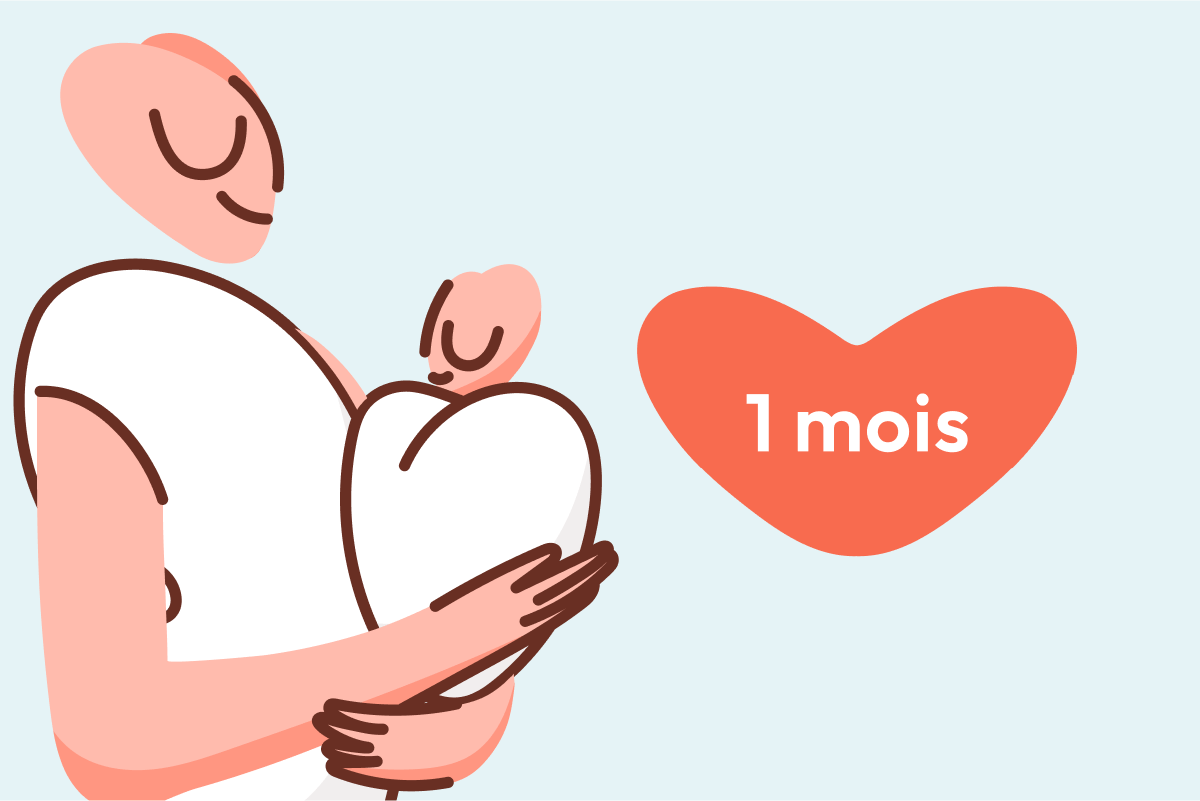Navigating life with a 1 month old baby can bring a colourful whirl of emotions and questions—sometimes all within the same hour. Fingerprints on your soul, endless sleepy gazes, those delicate murmurs and cries—your world pivots around a miniature universe. Feeding, sleeping, comfort, and a thousand small changes couple together, making your days simultaneously slow yet rushing, simple yet filled with the intricate details of growth. Are you gently worrying if your baby’s development is “normal”? Are you counting wet diapers, peering at sleepy eyelids, wondering about little grunts and stretches? Confusion and delight coexist, but practical clarity can transform the journey. Here, discover how your 1 month old baby is growing—physically and emotionally—with insights into feeding patterns, sleep rhythms, gentle routines, and the arc of medical science guiding these early weeks.
Key milestones and first transformations
Physical development and reflexes
Observe the swift progress your 1 month old baby undergoes—a fascinating blend of automatic reflexes and tiny new skills. The classic rooting reflex (that cheek nudge and head turn searching for the nipple), charming grasp of your finger, and the famous Moro reflex (arms flaring in startled response) testify to healthy neurological wiring. These automatic gestures, orchestrated by the brainstem, fade as voluntary control grows.
Paediatricians carefully measure head circumference, length, and weight at each visit. On average, there’s an addition of about 2.5 to 4 cm in length and 1.5 to 2 pounds in weight; head circumference might expand by 1.25 cm. Of course, these numbers are guides—each 1 month old baby charts their own growth curve, influenced by genetics, feeding style and unique temperament. Concerned about slow weight gain, muscle tone or head control? Medical teams focus on trends, not isolated numbers, so share your observations openly.
Motor skills: from reflexes to early head control
Short tummy time sessions (1–5 minutes, several times daily and always under supervision) encourage a brief lift of the head and the first coordination between neck and shoulder muscles. Arms and legs stretch out, switching from curled foetal postures to more relaxed, spontaneous movements. Motor actions remain jerky and hands often clench into soft fists—don’t worry, this is quite expected for a 1 month old baby.
Noticing stretches, occasional kicking, and gradual efforts to move the head side-to-side? These incremental actions reinforce pathways vital for later rolling, sitting, and crawling.
Sensory awakening and early social contact
Vision and hearing: the world comes closer
A newborn’s gaze is fixed and fascinated by bold, high-contrast visuals or familiar faces—usually at a short distance, around 20 to 30 cm (8–12 inches). The retina is still maturing, so clarity is limited, but parents’ faces, especially eyes and mouths, become a captivating focal point. You may observe brief tracking of moving objects—an early indication of developing eye muscle strength and coordination.
Hearing is robust. Sudden noises provoke the Moro reflex, while gentle voices offer comfort. Your 1 month old baby will begin responding to sounds and tones, laying the foundation for future language development. Early identification of caregivers occurs not only by sight and sound but by smell and the taste of mother’s skin during feeds.
Crying, cooing, and connecting
Expect variations in the types of cries—a subtle distinction between hunger, discomfort, or the need for closeness. Sometimes, a soft coo slides in, or you may catch the first hint of a reflexive smile, often in quiet, alert moments. Make eye contact, narrate simple routines, or sing lullabies; such consistent communication nurtures emotional bonds and encourages your 1 month old baby to later attempt more complex social exchanges.
Emotional nurturing and secure attachment
Affectionate touch (skin-to-skin contact, gentle stroking, or soothing massage) activates the release of oxytocin, the hormone of love, reducing stress for both parent and baby. Responding promptly to cries, providing warm embrace and calm voices, shapes early trust patterns in your 1 month old baby’s rapidly developing limbic system (the emotional brain network).
Stimulation and play: supporting the senses
During fleeting periods of alertness—often just 30 minutes to an hour—engage in gentle, sensory-rich play. High-contrast toys, simple rattles, soft melodies, and sensory mats draw the attention of a 1 month old baby. Brief, daily (supervised) tummy time builds neck and shoulder strength, while your voice and presence remain the ultimate comfort and stimulus. Encouragement matters: praise head lifts, hold soft toys within sight, and alternate positions to promote even muscle development.
Feeding your 1 month old baby
Breastfeeding: rhythm, practical cues, and technique
With newborn digestion still settling, most parents notice frequent feeding—typically 8–12 times over 24 hours—guided by subtle hunger signs: rooting, sucking, restlessness, and hand-to-mouth moves. A 1 month old baby usually turns away, relaxes hands, or becomes drowsy when satisfied; force-feeding is unnecessary. Check for a deep latch: the baby’s lips cover much of the areola, sucking is rhythmic, with occasional audible swallows, while pain-free feeding indicates correct position.
Concerns about milk supply, latch pain or cracked nipples? Consult a lactation consultant, who can assess feeding mechanics and suggest positioning tweaks. Wash hands before feeds; regular breast cleansing is less essential unless specifically instructed by your doctor.
Formula feeding: preparation precision and comfort signals
Formula-fed infants tend to feed every 3–4 hours. Prepare powder or liquid formula exactly as per packaging instructions—misproportion can impact hydration and nutrition. Clean bottles using hot water (60°C, if using a dishwasher), rinse thoroughly, and avoid microwave reheating to prevent loss of nutrients and hot spots.
Position your 1 month old baby semi-upright, never flat or with a propped bottle—both are linked to ear infections and choking. Burp your baby midway and after feeding (patting or rubbing the back gently), especially if swallowing air or prone to spit-up.
Common feeding hurdles: reflux, burping, and feeding position
Spitting up is routine at this stage, as the lower oesophageal sphincter (the valve separating stomach and food pipe) is not fully developed. Upright holding post-feed, frequent burping, and avoiding jostling can minimise discomfort. Vomiting that’s forceful, persistent, or accompanied by lethargy, poor feeding, or few wet nappies warrants consultation with your paediatrician.
Hunger signals, wet diapers, and growth satisfaction
Meeting nutritional needs is verified by output: expect 4–6 wet diapers for breastfed, 5–6 for formula-fed babies—a simple indicator of sufficient intake. Weight gain trends upwards, a reassuring sign that your 1 month old baby is on a healthy trajectory.
Supplements: vitamin K and vitamin D
Breastfed infants commonly receive supplemental vitamin D (critical for bone mineralisation and rickets prevention) and vitamin K, essential for blood clotting. Most formula milks provide adequate vitamin K but not always optimal vitamin D. Discuss supplementation in detail with your healthcare provider for tailored advice.
Sleep dynamics and safe routines
How much and when? Patterns and expectations
Sleep structures the life of a 1 month old baby—about 14 to 18 hours each day, often in fragmented stretches. Day and night distinctions are still developing, so be prepared for unpredictable patterns and waking for feeds every 2–4 hours. Brief wake windows—just long enough for a feed, a fresh diaper, and some cuddles—allow your baby to reset for the next sleep phase.
Safe sleep practices and SIDS prevention
Medical research strongly supports placing your 1 month old baby on their back for every sleep, on a firm, flat surface—usually a crib or bassinet with no loose bedding, pillows, or bumpers. Room-sharing (sleeping in your room, but not your bed) increases safety, and controlled room temperature avoids overheating. Once breastfeeding is established, a pacifier can be offered at sleep onset.
Sleep cues—yawning, fussiness, rubbing eyes—signal it’s time to initiate nap or bedtime. Overstimulated babies struggle to settle; a consistent, soothing routine (gentle rocking, soft singing, dim lighting) guides them into more restful sleep.
Daily hygiene and safety care
Bathing, umbilical cord, skin, and nails
Two to three warm baths per week suffice. Until the umbilical cord stump drops (usually within the first two weeks), opt for sponge baths and keep the area dry. Any redness, oozing, or foul odour requires quick attention from a healthcare professional.
Diaper changes (every 2–3 hours or immediately when soiled) reduce risk of diaper rash. Use soft cloth and water, or hypoallergenic wipes, and a barrier cream to protect sensitive skin. Trim fingernails after baths using rounded infant scissors or a gentle file to avoid inadvertent face scratches.
For facial cleansing, a damp, soft cloth suffices; for eye care, always wipe gently from the inner to the outer corner. Stuffy noses respond well to saline drops recommended for infants.
Car safety and home environment
Install a rear-facing car seat correctly (straps snug, chest clip at armpit level). Never leave a 1 month old baby inside the car unattended. Inside the home, check for loose objects, cords, or choking hazards that might go unnoticed in daily routines.
When to seek medical attention
Emergency signals—fever over 38°C (100.4°F), persistent vomiting, trouble breathing, feeding refusal, or redness/discharge at the umbilical site—require expert assessment. Maintain a stocked first aid kit and learn paediatric CPR for peace of mind.
Medical follow-up and growth tracking
Monitoring progress: heads, weight, and routines
Professional check-ups every few weeks ensure consistent growth of the 1 month old baby—doctors measure head size, weight, and length, monitoring for deviations from expected patterns. Colour, consistency, and frequency of stools changes as the digestive tract develops: dark meconium in initial days, then golden or tan stools for breastfed, thicker brown for formula-fed. A sudden shift to red, black, or chalky white stools signals potential concern—prompt discussion with the paediatrician is advisable.
Common digestive issues: colic, reflux, newborn acne
Some babies display bouts of colic (frequent, intense crying without obvious cause); others show signs of reflux or develop mild, self-resolving newborn acne—tiny red bumps on cheeks and nose. Most of these patterns resolve independently as organ systems mature, but persistent symptoms, especially with poor feeding, fever or sluggishness, require attention.
Activities and bonding
Gentle play, sensory feeding, and early learning
Tummy time—essential for neuromotor development—occurs in brief, supervised bursts across the day. Soft mobile toys, picture books with bold patterns, and simple music create multisensory stimulation. Hold your 1 month old baby close, talk about daily tasks, or sing repetitive rhymes; rhythm and melody foster memory and emotional connection.
Responding to cues, enhancing attachment
Responsive caregiving (soothing touch, prompt attention to cries, regular interaction) builds secure attachment. Try gentle massage with baby-safe oil to relax muscles, encourage digestion, and deepen the parent-child bond. Watch for overstimulation—the tell-tale fussiness or gaze aversion indicates the need for a quiet reset.
Self-care and support for parents
Sleep deprivation and emotional tides
The transition to parenthood can be disorienting—fatigue mingles with bursts of joy. Seize moments to rest, accept practical help, and resist pressure for perfect routines. Emotional fluctuations are common; don’t hesitate to discuss mood changes with your doctor or seek postnatal support.
Building a supportive environment
Invite positive involvement from family or friends for meals or errands. Setting gentle boundaries for visitors protects recovery time and bonding opportunities. Open conversations with your partner foster unity and shared understanding amid sleepless nights.
Nurturing your wellbeing
Simple rituals—nutritious food, brief showers, a short walk, deep breathing—lift energy and perspective. Remember: healthy parents nurture healthy babies.
Key Takeaways
- The first month with a 1 month old baby is shaped by rapid physical and emotional shifts; steady growth, regular feeding, and flexible routines form the foundation for future progress.
- Safe sleep practice—always on the back, with no loose bedding—is non-negotiable.
- Follow medical recommendations for feeding (breast or formula), vitamins, and supplements, especially for vitamin D and K, tailored to your baby’s needs.
- Responding consistently to cues, maintaining hygiene, and providing sensory stimulation shape secure attachment and healthy development.
- Medical check-ups, weight and growth tracking, timely response to illness signals, and effective communication with paediatric professionals safeguard wellbeing.
- Self-care—sharing the load, resting when possible, and setting boundaries—matters profoundly for parents as well.
- For tailored health advice and free questionnaires, parents can download the application Heloa.
Questions Parents Ask
How can I soothe my 1 month old baby when they are fussy?
Periods of fussiness are common, especially as a 1 month old baby adjusts to new sensations and stimuli. Try gentle rocking, swaddling in a light blanket, soft singing, or using white noise. Sometimes, just holding and patting softly makes all the difference. If crying seems prolonged or nothing calms your baby, seek the advice of a healthcare professional.
Is it normal for my 1 month old baby to be awake only for short periods?
Yes, this is quite typical. Most 1 month old baby will have alert periods short—just enough for feeding and a little bonding before needing to sleep again. If your baby is content and alert during these short wakes, their routine falls within expected early life development.
What kinds of activities are suitable for my 1 month old baby?
Even simple actions are valuable—gentle tummy time, showing high-contrast toys, brief soft music, talking or singing softly. These methods stimulate curiosity and support early motor and sensory pathways in a 1 month old baby. Keep stimulation relaxed and observe your baby’s cues for when enough is enough.
Further reading:









